How does a Samsung washing machine work?
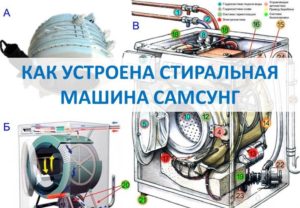 Usually, it does not occur to users to deal with the internal structure of a Samsung washing machine, but if any malfunction occurs, interest in this issue arises instantly. To repair equipment yourself, you need to study the diagram of the unit, understand where the parts and components of the machine are located. Most SMAs have a similar structure; the difference can only be observed in some elements; now we will take a very detailed look at Samsung brand washing machines.
Usually, it does not occur to users to deal with the internal structure of a Samsung washing machine, but if any malfunction occurs, interest in this issue arises instantly. To repair equipment yourself, you need to study the diagram of the unit, understand where the parts and components of the machine are located. Most SMAs have a similar structure; the difference can only be observed in some elements; now we will take a very detailed look at Samsung brand washing machines.
What parts does it consist of?
In order to be able to correctly diagnose emerging breakdowns and competently repair an automatic washing machine, you should understand what structure the device has. Any Samsung washing machine, regardless of the load type, contains the following basic elements:
- electric motor;
- tank;
- pump;
- several types of pipes;
- detergent dispenser;
- various springs and shock absorbers;
- heating element (heating element);
- drain filter;
- electric pump;
- drum pulley;
- snail;
- temperature sensor;
- SMA control module;
- special counterweights;
- hatch blocking device;
- inlet solenoid valve;
- hatch door cuff;
- liquid level switch;
- power unit (is the power source for the entire device);
- drain and inlet hoses;
- SMA control panel.
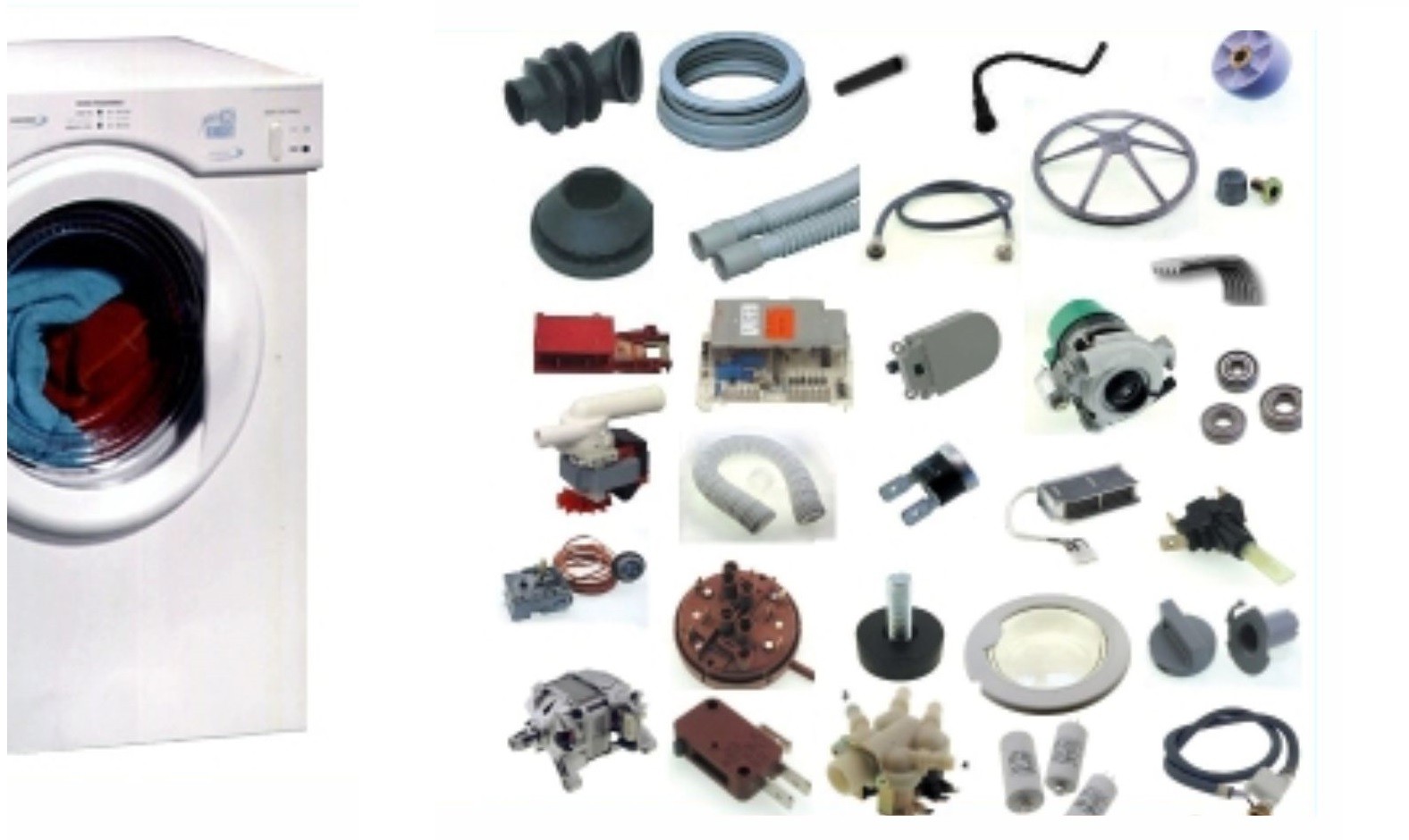
The design of the automatic machine consists of the listed basic parts. All elements are located in the housing. If we talk directly about the metal body of the washing machine, it consists of side walls, top, front and back covers and bottom.How the hatch is positioned, horizontally or vertically, depends on the type of loading selected. To better understand how the machine works, let’s take a closer look at some of the individual elements, look at what tasks they solve and what to do if a part fails.
Control block
The power unit powers and controls all elements of the washing machine. It is the electronic module that sends the signal to turn the unit on and off through the wiring connecting the control board and each SMA unit.
All special programs, additions, and washing modes are executed and regulated by this unit. That is why, if any one element of the module breaks down, then any part of the washing machine may stop functioning. In order to control basic tasks, for example, filling the tank with water or rotating the drum at the required speed during a spin cycle, the power unit has semiconductors responsible for each function separately.
One of the parts of the control module is the SMA control panel. By pressing the buttons or rotating the program selector, the user independently selects the preferred washing mode, spin speed, water heating temperature, and with these actions transmits a signal to the power unit, which is then responsible for the normal fulfillment of the specified conditions.
Important! A malfunction of the control unit is considered a serious breakdown, which is quite difficult to fix, so it is worth inviting a qualified technician to repair the module.
Level sensor and filling valve
The liquid level relay (also known as a pressure switch, level sensor), as the name implies, controls the volume of water in the tank.The pressure switch measures the pressure in the tank and sends an information signal to the control unit. The electronic module, having received the information, commands the filling valve to stop drawing water from the communications.
The inlet valve can have from 1 to 3 coils. It is to them that the voltage is transmitted, which allows the valve membrane to open and begin to function. When a signal is received from the control unit to start drawing water, the membrane opens and begins to operate. As soon as the voltage stops being supplied to the coils, it closes.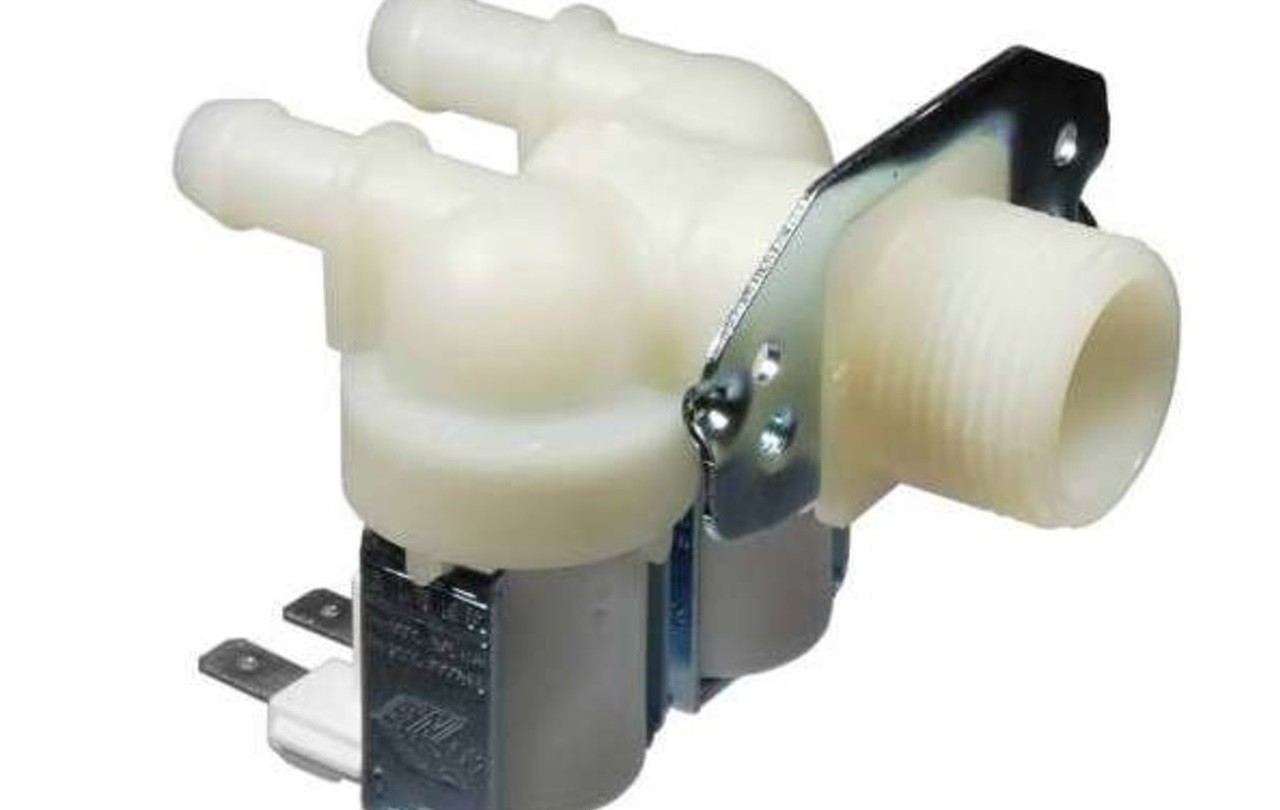
These two elements are described together for a reason; they constantly interact. The scheme is as follows: the filling valve takes in water, and the level sensor controls the optimal volume of liquid, preventing underfilling or overfilling.
Motor and tachogenerator
This pair of parts also works together. The motor “forces” the drum to rotate, and the tachogenerator ensures that the number of revolutions corresponds to the specified one. The tachometer helps the control module control the speed of the motor, since for each washing mode the rotation speed must be different.
The electric motor of the washing machine promotes the correct rotation of the drum at a given pace. Most modern Samsung washing machines are equipped with inverter motors. In this case, the motor is attached directly to the drum, resulting in greater efficiency and engine power. This design is reliable and durable; failure of the inverter motor is extremely rare.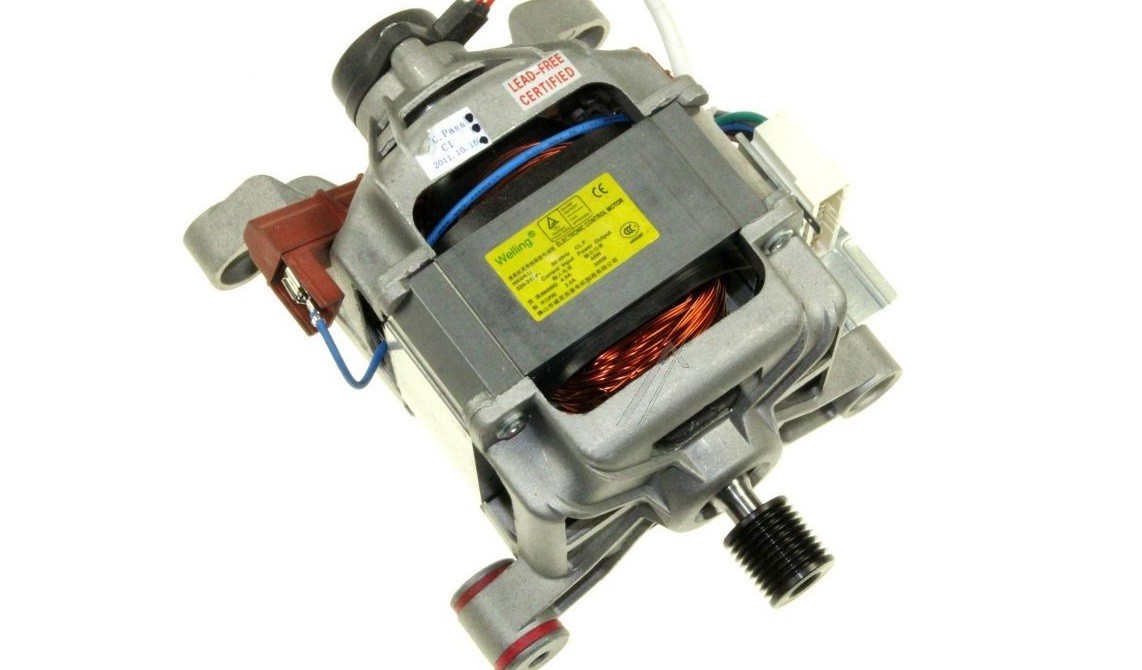
The commutator motor drives the drum thanks to a special belt. In this case, the electric brushes wear out, so from time to time the motor will need to be repaired.
Heating element and temperature sensor
The function of the heating element is to heat the water in the tank to the desired temperature. Each of the washing modes requires setting a certain temperature, so the control unit, having received a signal about the program selected by the user, transmits the specified degree of water heating to the heater.
The temperature sensor monitors the temperature, and after reaching a given degree, transmits a signal to the power unit. The thermostat is presented in the form of a metal pipe installed directly in the housing of the heating element. Having received a signal from the temperature sensor, the main unit automatically turns off the heating element.
Springs, shock absorbers and counterweights
Using these components, the washing machine is prevented from oscillating and “bouncing” during operation. This is very important, otherwise the machine would simply destroy itself from the inside during the spin cycle. What details are we talking about?
- Shock absorbers fasten the lower part of the tank to the body of the SMA, and prevent it from bouncing during spinning and hitting the walls.
- Springs support the reservoir from above, their function is very similar to the purpose of shock absorbers.
- Counterweights are weight blocks, they are connected to the outer surface of the tank and serve to maintain balance.
During operation of the machine, the counterweights may be destroyed under the influence of strong vibration. However, in most cases, their fastenings simply become a little loose, and by tightening them you can cope with the problem of the washer “rattling.”
Locking device and cuff
The hatch locking device is nothing more than an electronic lock that closes the door before the wash starts.The user, having closed the hatch, activates only the mechanical lock, and after starting the program, a click can be heard - this is what turns on the electronic door lock. Only after such a signal will water begin to flow into the tank. UBL prevents accidental opening of the door during washing.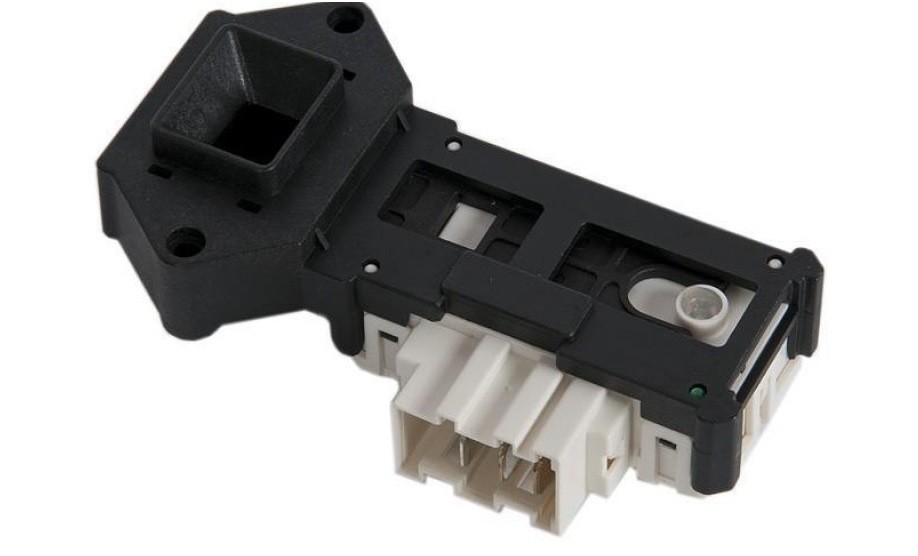
The cuff serves to more securely close the hatch. It is a rubber seal that prevents water from leaking through the gap between the SMA body and the hatch door. Make sure the cuff is clean, dry and undamaged. If the rubber band breaks, you should not use the machine until the problem is fixed, as liquid from the drum will spill onto the floor.
Snail, filter, pump
A pump is a special pump that is used to pump waste water out of the drum after the preliminary or main wash process or rinse mode. In Samsung washing machines you can find two types of pumps:
- synchronous;
- asynchronous.
The internal contents of the pump are standard: a motor and an impeller. A volute is attached to the top of the pump, to which a pipe and a drain hose are connected. In most cases, the pump fails due to foreign objects entering the system.
If there are coins, wrappers, small toys, etc. left in the pockets of clothes loaded into the drum, all this may end up in the drain pipe. Because of this, not only the filter and hoses become clogged, but also the pump itself. The garbage filter is installed in a snail, which is attached to the pump. As you can see, these three elements are very closely interrelated.
Plastic tank and metal drum
The plastic tank is an important part of the washing machine; it is where water is collected and mixed with detergents. It is necessary to ensure that the tank does not lose complete seal. Otherwise, a water leak may begin, which is quite difficult to eliminate.
The drum is made of metal and is located inside the tank. Housewives put their laundry in it. As you noticed, the surface of the drum is corrugated, this is necessary for better washing of contaminated fabrics. The drum is also equipped with plastic ridges (ribs), which allow you to scatter the laundry inside, ensuring that a mixture of water and detergents penetrates into the clothes.
On different models of Samsung machines, the drums have different volumes and, accordingly, different maximum loads of laundry.
Hoses, pipes and powder receiver
The detergent dispenser (dispenser) is designed to store washing powder and conditioner until they are supplied to the tank. The powder receptacle has a smart device and prevents detergents for different purposes from entering the tank at the same time. At the beginning of the wash, the dispenser supplies powder, and at the rinsing stage, conditioner.
Drain and inlet hoses are important components of the unit. They are necessary for timely intake of water into the tank and drainage of waste liquid. In addition to the hoses, it is worth talking about the pipes; they are located inside the housing and serve to transport water in the system.
The washing machine is quite complex, and at first it may seem that it is simply unrealistic to understand the layout and operating principle of each specific part. But if you study this issue well and immerse yourself completely in it, you can certainly figure it out.
Interesting:
Reader comments
- Share your opinion - leave a comment

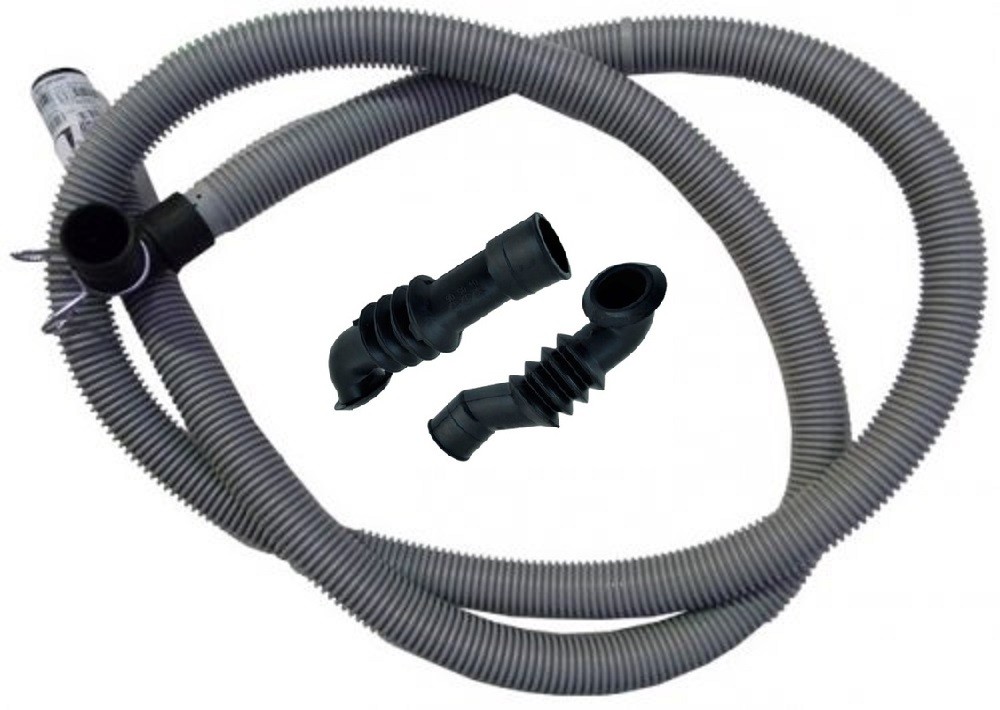

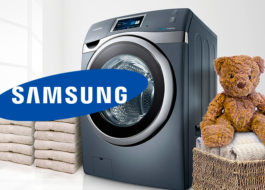

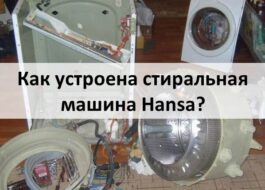
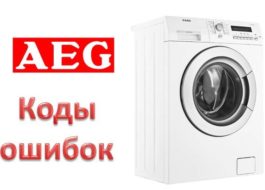
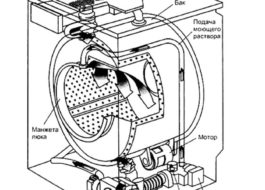














Add a comment